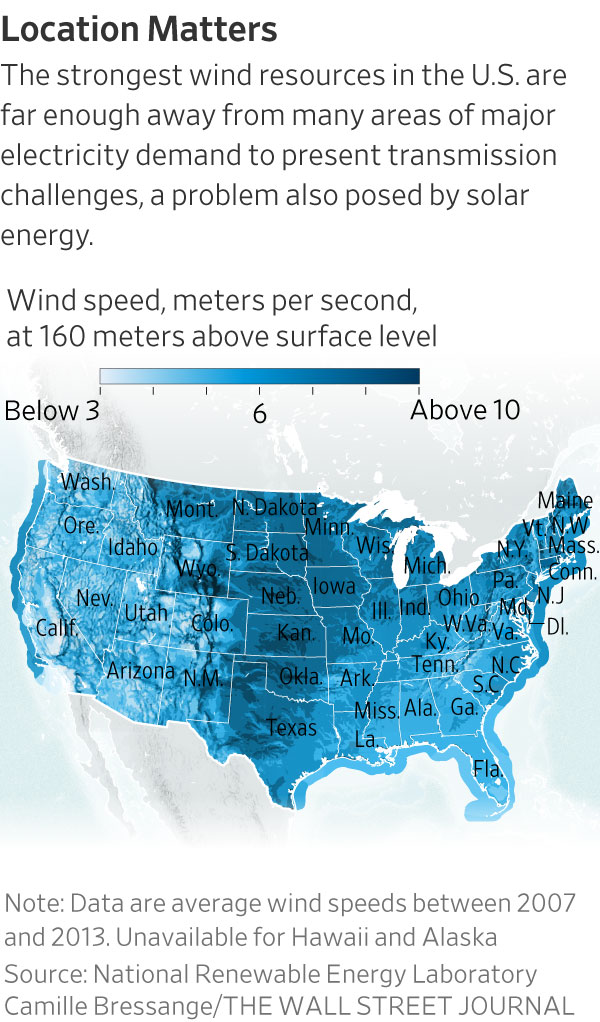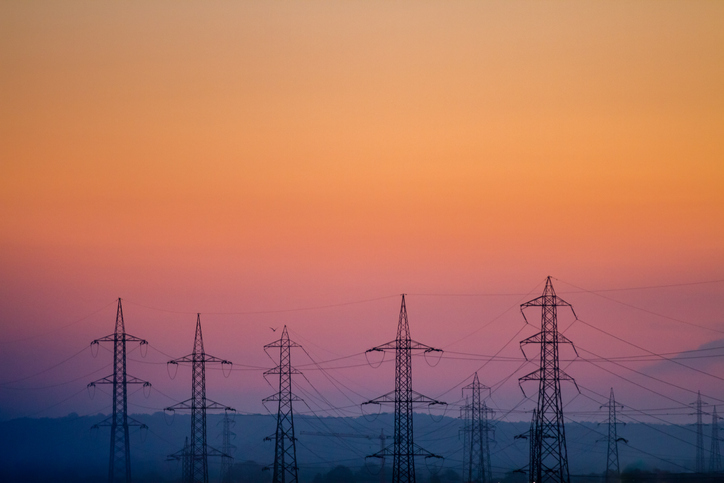The Five Things Keeping Us From Going All-Electric
The ‘electrification of everything’ gets talked about a lot these days. But it isn’t going to happen soon. Nor should we want it to.
Electrification is all the buzz.
As more governments, corporations, investors and consumers commit to reducing the world’s reliance on carbon-intensive fossil fuels, they are frequently turning to electricity as the power of choice. The International Renewable Energy Agency, an intergovernmental organisation, projects that close to half of world energy consumption could be in the form of electricity by 2050, up from about 20% today.
It makes sense: Electrification is often the fastest and cheapest way to decarbonise our energy consumption. The technologies to decarbonise electricity already exist and are, for the most part, readily deployable at a large scale by the private sector.
But here’s a sobering fact about all the talk of the “electrification of everything”: It isn’t likely to happen. At least, not soon. We can’t go all the way down the electrification road for a host of reasons—nor should we want to. For one thing, it would place unnecessary limitations on other viable solutions to rising greenhouse-gas emissions. It also ignores existing technical, regulatory and strategic constraints on electrification.
None of this is to say the world shouldn’t be shifting to new—and cleaner—electricity. And not just because of its role in fighting climate change. Among other things, electrification via renewable energy is playing a pivotal role in energy security for a variety of countries where oil and gas is scarce and expensive, and where volatile fuel prices threaten economic growth and fiscal stability. Clean energy helped Germany and other European countries cope with the loss of natural-gas imports from Russia last year. New clean energy is also helping key economies like China and India reduce air pollution.
But even with its environmental and strategic benefits, electrification won’t be the be-all and end-all for the foreseeable future.
Here are five reasons why:
1. Some things can’t be electrified
There are a lot of industries that are too difficult or expensive to be electrified for the foreseeable future. Do you want to know why there is no major commercial airline currently operating electric long-distance flights? It’s because the battery weight needed to hold enough energy for a trans-Atlantic flight would be greater than that of the airliner itself.
The weight of the battery and driving range is also a barrier for electrifying 18-wheeler trucks, though that electrification technology is further along than that for large jets. Freightliner has a big rig called eCascadia, but its range is only 250 miles, recharging takes over 90 minutes, and the e-truck is two to three times more expensive than its diesel-fuel version.
That may change as the battery and charging-station technology develops. A new study by the Environmental Defense Fund says that long-distance battery electric trucks could be cost effective by 2030, but other solutions are also possible by then, such as hydrogen, waste-to-energy, biofuels and tailpipe capture. (More on that in a moment.)
High-heat industrial processes, such as those for blast furnaces, cement kilns and petrochemical plants, are another commercial activity that will be hard to electrify, because electric high heat can be challenging and expensive for some industrial applications.
One key problem is that any unplanned downtime or fluctuation in temperature levels—caused by electrical fluctuations or disruptions from weather, accidents or a failed circuit breaker—not only can ruin the end product but also possibly damage billions of dollars of industrial equipment. While that scenario can be averted with automated backup energy systems, as is done routinely for nuclear plants to prevent a meltdown, it’s still an expensive add-on cost.

2. Cheaper alternatives may be coming for the most difficult-to-electrify areas
Electric power doesn’t have a monopoly on innovation. As a result, it could be risky for some industries to invest in some electrical solutions at the moment, knowing there might be a superior, cheaper technical solution down the road. Alternatives such as biofuels, hydrogen or biogas and fossil fuels with carbon sequestration offer the potential to be superior sources of power.
For instance, Remora, a startup based in Wixom, Mich., is designing a device that can collect tailpipe CO2 directly while a truck is in operation, compressing it for later sequestration or sale. Several airlines have started to use jet fuel made from purified biogenic waste that can be mixed with oil-based diesel fuel—so-called drop-in fuels that don’t require special or new fuel-transport infrastructure. Hydrogen made from renewable energy also could eventually be a solution for fueling planes and trucks.
Heidelberg Materials, a global manufacturer of building materials, is studying carbon capture and storage for its Mitchell, Ind., operations that would allow it to continue to use a fossil-fuel energy source while adding equipment that would separate CO2 emissions from other waste gases before, during and/or after combustion activities. Heidelberg would then transport its waste CO2 to be permanently injected into deep geological storage or to be reused making other products in a way that it doesn’t wind up back in the atmosphere.
These examples have the advantage of using existing energy infrastructure rather than retiring it before its end-of-life service.
3. Access to land, a surfeit of complaints
Yes, there is plenty of uninhabited land in many countries, and especially in the U.S. But uninhabited doesn’t always spell accessibility.
For one thing, in highly urbanised regions or densely populated countries, it can be difficult to find sufficient empty land to support alternative-fuel installations. Around the world, in places as diverse as India and Africa, renewable-energy developers often have trouble getting permits to buy or lease the necessary acreage. And in many areas, including the U.S., local populations can object to living near wind and solar farms, or near the power transmission and distribution lines that they require.
Consider this: It would take a wind farm on about 100,000 acres to generate the same amount of electricity as a one-gigawatt nuclear plant that typically occupies less than 1 square mile, or 640 acres. Princeton University estimates in a high-renewable-energy scenario, where solar and wind would account for virtually all electricity generation for the U.S. in 2050, the number of wind turbines would require roughly 244 million acres of uninhabited land—even assuming efficiency improvements. The current U.S. electrical system only uses about 20 million acres for the power generation business, including fuel-source production (e.g., coal, natural gas, solar, wind, nuclear and hydro), and power plants. Today’s power lines take up 4.8 million acres in the U.S., but that could increase sharply the more renewables that are added.

For a small country like Japan, that renewables-footprint requirement seems insurmountable, even if its nascent offshore wind business gets off the ground. But even for a large nation like the U.S., construction of wind and solar farms often gets held up by groups who want to use the land (or sea) for something else. In the entire U.S., there are two small offshore wind platforms currently in operation, with a third, larger one, nearing completion. The Biden administration is trying to change that at the federal level, but local factors are often hard to sort out.
Moreover, all that uninhabited U.S. land isn’t necessarily contiguous with large energy-using metropolitan regions or located where the most commercial-scale resource of renewable energy is available. For instance, many large U.S. cities aren’t contiguous with Midwest or offshore wind resources or Southwest solar.
4. Difficulty getting the necessary permits
Since the energy resource used for electricity generation often isn’t located in populated areas, that means more transmission lines will be needed, and more lines means more permitting, which can be a time-consuming, multiyear process.
In addition to potentially requiring new transmission lines, new renewable projects also have to receive technical approval to be allowed to connect into existing grids to prove that adding more electricity won’t destabilise existing service. Again, that can take years for regulators to study and approve. The U.S. Congress has talked about permitting reform, but a solution to the problem isn’t currently on the horizon.

The U.S. isn’t the only place with transmission-construction and grid-connection obstacles. In India, land permitting for solar energy can be a bureaucratic nightmare and remains a barrier. In Germany, local opposition to new high-tension transmission lines to carry offshore wind energy from the country’s northern shores to its southern factories blocked projects for years before the Ukraine crisis. In Africa, governments that can access foreign aid for construction of wind and solar installations have had more difficulty financing the transmission lines to carry the power generated to populations and industry. All of this will continue to slow down electrification.
5. Electricity grids are highly interruptible
It isn’t just the occasional squirrel that’s the problem. In recent years, we have witnessed weather systems that knocked out power for huge swaths of the U.S. at once. The war in Ukraine is a reminder that cyberattacks against the grid could be catastrophic if too many aspects of daily life are tied to a singular infrastructure. Already, there are many vital services that cannot be conducted without access to electricity, like lighting, telecommunications, data centres and financial services. Broadening that to our entire fuel system and industrial operations seems risky, if not downright irresponsible.
There will be technical solutions to the risks of electricity disruptions, but it will take time and money to implement them. Households, governments and regional grids will all have to invest in backup systems that can be turned on seamlessly using automation when the larger grid goes down. That could take decades—and an enormous amount of money. BloombergNEF estimates that it could take as much as $17.3 trillion to expand the grid and $4.1 trillion to maintain what is there now, for a total of $21.4 trillion.
Ultimately, there is little doubt that the world is heading for the electrification of a lot more things. And that’s good—for energy security, stable economic growth and reduced greenhouse-gas emissions.
But it’s also clear that a goal of electrifying everything is neither possible nor desired, and putting all our power eggs in one basket would be a fool’s errand. Innovation is by no means isolated to the electric domain. Many forward-looking businesses are experimenting with new ways to squeeze emissions out of industrial processes, and to replace fossil fuels in transport and building applications, in some cases with assistance from governments. Power to them. Rather than naysay what’s not electricity, let’s hope they unlock superior solutions.
 Copyright 2020, Dow Jones & Company, Inc. All Rights Reserved Worldwide. LEARN MORE
Copyright 2020, Dow Jones & Company, Inc. All Rights Reserved Worldwide. LEARN MORE
This stylish family home combines a classic palette and finishes with a flexible floorplan
Just 55 minutes from Sydney, make this your creative getaway located in the majestic Hawkesbury region.
As Paris makes its final preparations for the Olympic games, its residents are busy with their own—packing their suitcases, confirming their reservations, and getting out of town.
Worried about the hordes of crowds and overall chaos the Olympics could bring, Parisians are fleeing the city in droves and inundating resort cities around the country. Hotels and holiday rentals in some of France’s most popular vacation destinations—from the French Riviera in the south to the beaches of Normandy in the north—say they are expecting massive crowds this year in advance of the Olympics. The games will run from July 26-Aug. 1.
“It’s already a major holiday season for us, and beyond that, we have the Olympics,” says Stéphane Personeni, general manager of the Lily of the Valley hotel in Saint Tropez. “People began booking early this year.”
Personeni’s hotel typically has no issues filling its rooms each summer—by May of each year, the luxury hotel typically finds itself completely booked out for the months of July and August. But this year, the 53-room hotel began filling up for summer reservations in February.
“We told our regular guests that everything—hotels, apartments, villas—are going to be hard to find this summer,” Personeni says. His neighbours around Saint Tropez say they’re similarly booked up.
As of March, the online marketplace Gens de Confiance (“Trusted People”), saw a 50% increase in reservations from Parisians seeking vacation rentals outside the capital during the Olympics.
Already, August is a popular vacation time for the French. With a minimum of five weeks of vacation mandated by law, many decide to take the entire month off, renting out villas in beachside destinations for longer periods.
But beyond the typical August travel, the Olympics are having a real impact, says Bertille Marchal, a spokesperson for Gens de Confiance.
“We’ve seen nearly three times more reservations for the dates of the Olympics than the following two weeks,” Marchal says. “The increase is definitely linked to the Olympic Games.”

Getty Images
According to the site, the most sought-out vacation destinations are Morbihan and Loire-Atlantique, a seaside region in the northwest; le Var, a coastal area within the southeast of France along the Côte d’Azur; and the island of Corsica in the Mediterranean.
Meanwhile, the Olympics haven’t necessarily been a boon to foreign tourism in the country. Many tourists who might have otherwise come to France are avoiding it this year in favour of other European capitals. In Paris, demand for stays at high-end hotels has collapsed, with bookings down 50% in July compared to last year, according to UMIH Prestige, which represents hotels charging at least €800 ($865) a night for rooms.
Earlier this year, high-end restaurants and concierges said the Olympics might even be an opportunity to score a hard-get-seat at the city’s fine dining.
In the Occitanie region in southwest France, the overall number of reservations this summer hasn’t changed much from last year, says Vincent Gare, president of the regional tourism committee there.
“But looking further at the numbers, we do see an increase in the clientele coming from the Paris region,” Gare told Le Figaro, noting that the increase in reservations has fallen directly on the dates of the Olympic games.
Michel Barré, a retiree living in Paris’s Le Marais neighbourhood, is one of those opting for the beach rather than the opening ceremony. In January, he booked a stay in Normandy for two weeks.
“Even though it’s a major European capital, Paris is still a small city—it’s a massive effort to host all of these events,” Barré says. “The Olympics are going to be a mess.”
More than anything, he just wants some calm after an event-filled summer in Paris, which just before the Olympics experienced the drama of a snap election called by Macron.
“It’s been a hectic summer here,” he says.

AFP via Getty Images
Parisians—Barré included—feel that the city, by over-catering to its tourists, is driving out many residents.
Parts of the Seine—usually one of the most popular summertime hangout spots —have been closed off for weeks as the city installs bleachers and Olympics signage. In certain neighbourhoods, residents will need to scan a QR code with police to access their own apartments. And from the Olympics to Sept. 8, Paris is nearly doubling the price of transit tickets from €2.15 to €4 per ride.
The city’s clear willingness to capitalise on its tourists has motivated some residents to do the same. In March, the number of active Airbnb listings in Paris reached an all-time high as hosts rushed to list their apartments. Listings grew 40% from the same time last year, according to the company.
With their regular clients taking off, Parisian restaurants and merchants are complaining that business is down.
“Are there any Parisians left in Paris?” Alaine Fontaine, president of the restaurant industry association, told the radio station Franceinfo on Sunday. “For the last three weeks, there haven’t been any here.”
Still, for all the talk of those leaving, there are plenty who have decided to stick around.
Jay Swanson, an American expat and YouTuber, can’t imagine leaving during the Olympics—he secured his tickets to see ping pong and volleyball last year. He’s also less concerned about the crowds and road closures than others, having just put together a series of videos explaining how to navigate Paris during the games.
“It’s been 100 years since the Games came to Paris; when else will we get a chance to host the world like this?” Swanson says. “So many Parisians are leaving and tourism is down, so not only will it be quiet but the only people left will be here for a party.”
This stylish family home combines a classic palette and finishes with a flexible floorplan
Just 55 minutes from Sydney, make this your creative getaway located in the majestic Hawkesbury region.






















